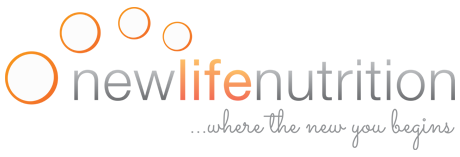Irritable Bowel Syndrome (IBS) is a common digestive problem that affects 1 out of 5 Australians at some point in their lives. The main symptoms include abdominal pain, bloating, flatulence, and diarrhoea or constipation. Unfortunately, living with these symptoms can reduce the quality of life of individuals with IBS.
But all is not lost.
Following a proper diet is one of the most effective ways to manage your IBS symptoms. The treatment approach is simple: avoid or eliminate certain foods that can trigger your symptoms.
Speaking of diet, one of the dietary solutions to manage your IBS symptoms is the Low FODMAP Diet. It was developed right here in Australia in the early 2000s by a group of researchers whose study focused on proving that FODMAPs could actually trigger IBS. Hence, limiting your exposure to FODMAPs can be an effective treatment for individuals with IBS as well as those who are at risk for it.
What is a Low FODMAP Diet?
FODMAP stands for Fermentable Oligosaccharides, Disaccharides, Monosaccharides And Polyols. Unfortunately, some foods that we usually eat contain large amounts of these fermentable short-chain carbohydrates:
- Disaccharides (e.g., lactose)
- Monosaccharides (e.g., fructose)
- Oligosaccharides (e.g., fructans and galacto-oligosaccharides)
- Polyols (e.g., sorbitol, xylitol, maltitol, mannitol, and isomalt)
When your small intestine fails to absorb these carbohydrates, the amount of water in your bowel increases. This can cause diarrhoea in some people, while for others, some of the carbohydrates go through to the upper part of their GI tract, where they are fermented by gut bacteria, thereby producing more gas.
The increase in the amount of water and gas in your gut often leads to flatulence, bloating, and changes in your bowel movements. This is how foods high in FODMAPs trigger symptoms of your IBS and other similar digestive disorders. Eating less of these fermentable short-chain carbohydrates can help reduce those symptoms. Several randomised controlled trials from around the world have shown that a low FODMAP diet is about 70% effective in the management of diarrhoea, bloating, and abdominal pain.
Bear in mind that this is a low FODMAP diet, and not a No FODMAP diet. Completely eliminating FODMAPs from your diet for a long period of time has negative effects on your body. Thus, we recommend checking with a professional dietitian who can help you understand everything you need to know about a low FODMAP diet, including the risks involved.
Low FODMAP Foods to Eat
Low FODMAP foods, if you haven’t guessed what they are at this point, are foods that contain minimal amounts of these short-chain carbohydrates. Individuals with IBS are usually advised by their dietitians to replace the high-FODMAP foods that they have been eating with these low-FODMAP alternatives to minimise their risk for discomfort brought about by their IBS symptoms.
This is a generic list of low FODMAP foods that may help alleviate your IBS symptoms. We strongly recommend that you consult with your dietitian or nutritionist before shifting to low FODMAP foods.
- Dairy-free food such as lactose-free milk, lactose-free yoghurt, almond milk, coconut milk, and macadamia milk
- Aged cheese such as brie, cheddar and feta
- Protein-rich foods such as fish, chicken, pork, beef, tofu, and eggs
- Vegetables such as cucumber, potato, lettuce, ginger, eggplant, olives, turnips, bamboo shoots, carrots, spring onions, bean sprouts, and parsnips
- Berries, citrus and other fruits such as strawberries, cranberries, grapefruits, lemons, oranges and lime, bananas, cantaloupe, kiwi, and honeydew
- Certain types of nuts: 10-15 pieces of macadamia nuts, peanuts, walnuts, almonds, and pine nuts per day
- Oat, oat bran, rice bran, and gluten-free pasta
- Grains such as white rice, quinoa and corn
High FODMAP Foods to Avoid
Now that you are familiar with the low FODMAP foods you might need to stock up on, let us find out the potential culprits behind your IBS attacks. This is a list of the high FODMAP foods that you might be better off avoiding in the meantime, grouped according to the particular short-chain carbohydrate that they contain a high amount of:
Lactose
- Cow’s milk
- Dairy (e.g., ice cream, yoghurt, custard, and pudding)
- Certain kinds of cheese (e.g., mascarpone, ricotta, and cottage)
Fructans
- Wheat and rye, as well as added fibre like inulin
- Onion, garlic, asparagus, artichokes, broccoli, Brussels sprouts, and beetroot
Fructose
- Fruits high in fructose, such as pears, mangoes, apples, watermelon, cherries, and peaches
- Products with high-fructose corn syrup, such as candies, soda, sweetened yoghurt, canned fruits, frozen junk foods, store-bought baked goods, and processed foods
- Artificial sweeteners, such as sucralose and saccharin
Polyols
- Snow peas, mushrooms, and cauliflower
- Pears, plums, apples, peaches, apricots, watermelon, cherries, blackberries, and nectarines
- Sweeteners typically found in sugar-free gum, drops, and cough syrups, such as sorbitol, mannitol, xylitol, maltitol and isomalt
Galacto-oligosaccharides
- Broccoli
- Soy products, lentils, chickpeas, and kidney beans
Manage your FODMAPS intake, manage your IBS
Familiarising yourself with the list of low FODMAP foods to eat and the list of high FODMAP foods to avoid is just one part of the formula. To successfully manage your IBS symptoms, you need to stay committed to your health, stay disciplined in following your low FODMAP diet or any other prescribed dietary plan and work closely with your dietitian.
Need Our Help?
Book an appointment with an accredited dietitian or nutritionist by phone on (07) 3071-7405 between 8am and 6pm Monday to Friday or send us an enquiry. Alternatively, learn more about how our Gut and Bowel Health services.
